Grazing cattle on the uplands, multispecies swards, agroforestry and pond installations are among the actions that Donegal farmers have carried out under the Inishowen Uplands European Innovation Partnership (EIP) scheme.
The five-year project is tailored to farmers in Inishowen, north Donegal, and will be completed in 2023.
Henry O’Donnell is the project co-ordinator of the scheme and there are 25 farmers involved.
“There are five measures in the scheme. The first one was reintroducing cattle on to the uplands.
“There would be a history of that here in Inishowen maybe 50 or 60 years ago. Our grandparents probably had cattle on these hills and it gradually faded away. We said we wanted to reintroduce it on a managed basis. Our rationale from the farmer’s perspective, is it’s a new grazing platform that farmers haven’t been using for the last couple of generations.
“From an environmental point of view, we could see that the right animal, managed in the right way, would provide conservation grazing and would complement the sheep. I suppose the elephant in the room now and then is that the economics of sheep farming on the uplands is very poor and there’s probably not enough of them on a lot of uplands and it’s very hard to increase their numbers.
“Our idea is that the sheep would benefit from cattle grazing it, because they’re non-selective and they would remove a lot of dead material and then the sheep would follow back in behind them.”
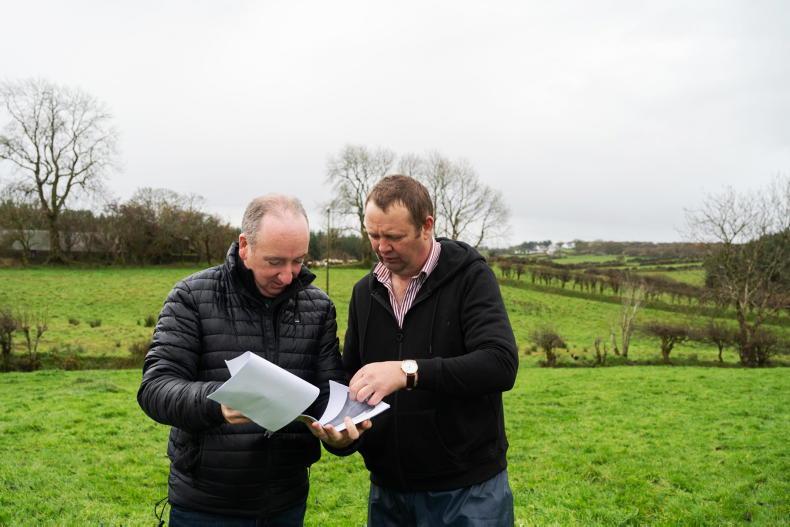
Project co-ordinator Henry O'Donnell and Inishowen EIP demonstration farmer James Breslin. \ Clive Wasson
Multispecies swards (MSS) have also been established on the farms under the project.
“We felt the current advice farmers were getting to reseed was to use perennial ryegrass. What was happening was farmers were reseeding their land. It was great for the first year, not too bad for the second year and from then on when it wasn’t fed, the sward opened up and we ended up with a worse sward than we started with.
“We came up with the whole concept of the diverse swards which had been used elsewhere and we felt it’s an ideal model for the type of farming we’re doing here,” O’Donnell told the Irish Farmers Journal.
Red clover is also used in the scheme and has resulted in farmers cutting back on fertiliser use.
“We could see that our farmers were dependent on using big quantities of nitrogen fertiliser on swards that weren’t that suitable to it and had issues with leaching. So we looked at the red clover sward and felt it was ideal to fit into our farming system.
It’s low-input and is a very productive high-protein crop that would do away with the need for concentrates. We’re concentrating on farmers who have sucklers and the ideal scenario that silage will be used for their weanlings and older cattle. The concentrate supplementation would be a lot less or even zero then.”

Agroforestry has been planted on James Breslin's farm under the scheme. \ Clive Wasson
Agroforestry is a key action in the scheme. “We said we wanted to design a very flexible agroforestry model that allows farmers to plant trees in various different scenarios and in a way that will benefit the livestock on the farm.”
Finally, ponds have started to appear on the participating farmers’ lands. O’Donnell said it’s about much more than just establishing a pond.
“It’s a whole conversation around how farmers manage water on the farm, about slowing down the flow of water on the farm, what we can do with siltation, what we can do with critical source areas and basically to get away from the situation where farmers have been told for the last 25 years to fence off water streams and don’t touch them,” he said, adding that they can act as a flood mitigation measure.
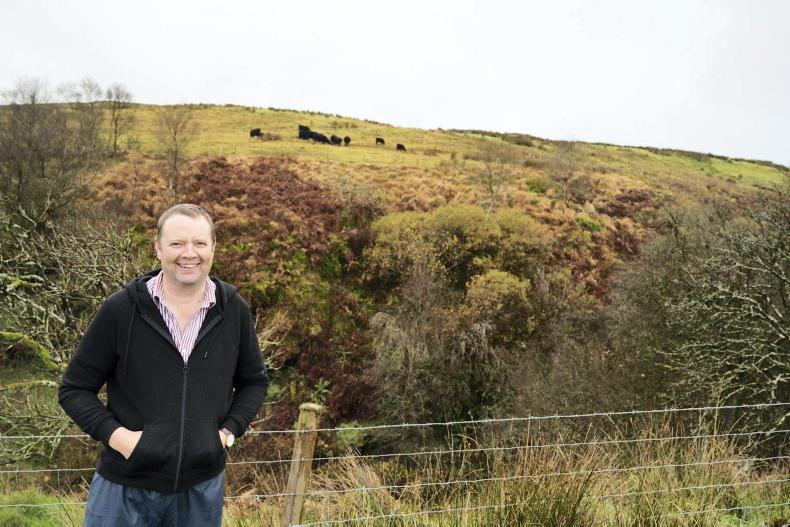
James Breslin farms in Redcastle, Inishowen, Co Donegal. \ Clive Wasson
Farmer focus: James Breslin
James Breslin is a cattle and sheep farmer in Inishowen. He has established five agroforestry plots – a riparian zone, wind breaks and a green barn area which, once established, will provide shelter for ewes and lambs in spring. All of the trees are native species.
He has cattle grazing the uplands, established a pond, and planted multispecies swards (MSS).
O’Donnell said, however, that the benefits of the agroforestry will be long-term and that the project will be finished long before any immediate benefits are seen.
“We’re not replacing farmers and livestock farmers with trees. We want the trees to serve a purpose. It’s the right tree in the right place,” O’Donnell said, adding that the group received a concession from the Department of Agriculture to ensure that any area planted with trees would remain fully eligible for all payments.
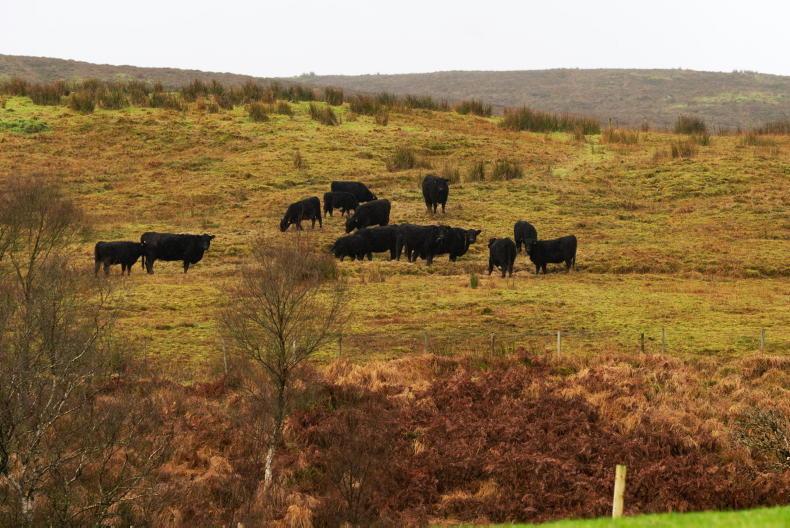
Galloway cattle grazing the uplands. \ Clive Wasson
The cattle grazing on the upland are doing conservation grazing. “They’re removing dead material which is a fire load and that just devastates uplands. The economic thing for the farmer is that James has Galloway cattle on that hill from April/May to November and there’s zero cost.
“If you take the long-term view, that the followers of those cattle can be grazed on diverse swards and then maybe finished on red clover silage there’s a whole circle on this farm here with very little or no inputs and a fabulous provenance for beef. This should be the caviar of beef,” O’Donnell said.
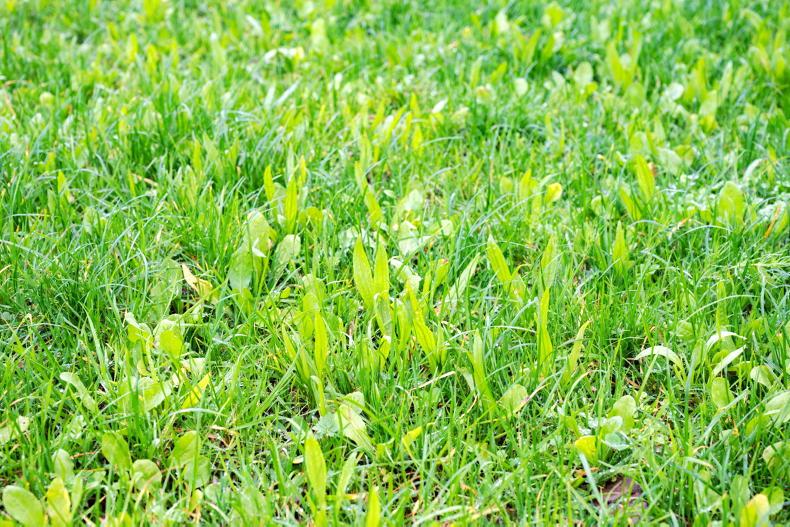
James Breslin planted multispecies swards on his land under the scheme. \ Clive Wasson
Breslin has planted a species mix including clover, chicory and plantain. “You can hear the field where the red clover is before you get to it in the summer, because of the amount of bees that are in it,” O’Donnell said.
Breslin has found the MSS to result in a great sward.
“I find you’ve a great sward of grass, the herbs aren’t as prevalent as they were but we’ve a good sward of grass here. The management is easy. This got absolutely no fertiliser, it got one coat of slurry, which with the price of fertiliser now is a big advantage,” he said.
He has 28 Galloway cattle, including followers, and they have grazed the uplands all summer and well into winter, when the Irish Farmers Journal visited.
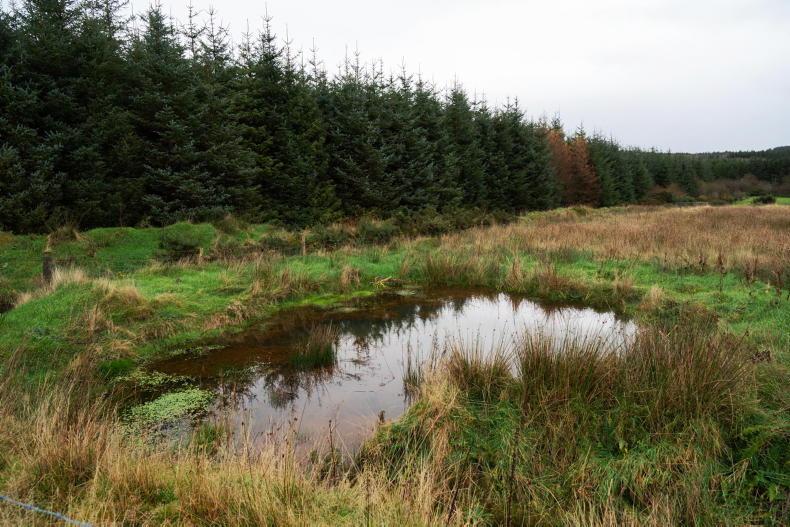
James dug out a pond on his land under the scheme. \ Clive Wasson
“The beef price at the minute is just the same as any other beef. We need to market it, because we have a product that’s special. Them animals have never seen a dose, have never seen a house. They’re outwintered. As for management, the only thing I’ve done them for is tick. They’ve never seen a fluke dose or a worm dose. Some of them are there eight years. They’re healthy, so if it’s not broken don’t fix it,” he said.
Lamb performance
He keeps 250 ewes and 100 hoggets, a mixture of lowland and hill breeds.
“We put 40 lambs on to what we thought was good aftergrass and 40 lambs into the MSS and the ones on the MSS outperformed the others. It was only a month’s trial but there were 3kg or 4kg in the difference. It was unreal,” he said.
There were ditches and hedges here years ago, but they’ve been taken away because we were told for years to put everything into green grass and make your farm bigger and more profitable
“I’m very happy with the scheme. The measures are very practical. The only thing I do find is the scheme isn’t long enough for us to quantify our results. We’re not going to be able to show our results at the end of 2023, especially with the trees and the pond.
“There were ditches and hedges here years ago, but they’ve been taken away because we were told for years to put everything into green grass and make your farm bigger and more profitable and keep more stock. Now things are changing, the tides are turning and they’re telling us to do the opposite. I’m happy to do that, it makes sense.
“The results are there in the clover and the diverse sward. A pound saved is as good as two earned. I’m saving money by not putting fertiliser out. Stock are doing better on it.”
Grazing cattle on the uplands, multispecies swards, agroforestry and pond installations are among the actions that Donegal farmers have carried out under the Inishowen Uplands European Innovation Partnership (EIP) scheme.
The five-year project is tailored to farmers in Inishowen, north Donegal, and will be completed in 2023.
Henry O’Donnell is the project co-ordinator of the scheme and there are 25 farmers involved.
“There are five measures in the scheme. The first one was reintroducing cattle on to the uplands.
“There would be a history of that here in Inishowen maybe 50 or 60 years ago. Our grandparents probably had cattle on these hills and it gradually faded away. We said we wanted to reintroduce it on a managed basis. Our rationale from the farmer’s perspective, is it’s a new grazing platform that farmers haven’t been using for the last couple of generations.
“From an environmental point of view, we could see that the right animal, managed in the right way, would provide conservation grazing and would complement the sheep. I suppose the elephant in the room now and then is that the economics of sheep farming on the uplands is very poor and there’s probably not enough of them on a lot of uplands and it’s very hard to increase their numbers.
“Our idea is that the sheep would benefit from cattle grazing it, because they’re non-selective and they would remove a lot of dead material and then the sheep would follow back in behind them.”

Project co-ordinator Henry O'Donnell and Inishowen EIP demonstration farmer James Breslin. \ Clive Wasson
Multispecies swards (MSS) have also been established on the farms under the project.
“We felt the current advice farmers were getting to reseed was to use perennial ryegrass. What was happening was farmers were reseeding their land. It was great for the first year, not too bad for the second year and from then on when it wasn’t fed, the sward opened up and we ended up with a worse sward than we started with.
“We came up with the whole concept of the diverse swards which had been used elsewhere and we felt it’s an ideal model for the type of farming we’re doing here,” O’Donnell told the Irish Farmers Journal.
Red clover is also used in the scheme and has resulted in farmers cutting back on fertiliser use.
“We could see that our farmers were dependent on using big quantities of nitrogen fertiliser on swards that weren’t that suitable to it and had issues with leaching. So we looked at the red clover sward and felt it was ideal to fit into our farming system.
It’s low-input and is a very productive high-protein crop that would do away with the need for concentrates. We’re concentrating on farmers who have sucklers and the ideal scenario that silage will be used for their weanlings and older cattle. The concentrate supplementation would be a lot less or even zero then.”

Agroforestry has been planted on James Breslin's farm under the scheme. \ Clive Wasson
Agroforestry is a key action in the scheme. “We said we wanted to design a very flexible agroforestry model that allows farmers to plant trees in various different scenarios and in a way that will benefit the livestock on the farm.”
Finally, ponds have started to appear on the participating farmers’ lands. O’Donnell said it’s about much more than just establishing a pond.
“It’s a whole conversation around how farmers manage water on the farm, about slowing down the flow of water on the farm, what we can do with siltation, what we can do with critical source areas and basically to get away from the situation where farmers have been told for the last 25 years to fence off water streams and don’t touch them,” he said, adding that they can act as a flood mitigation measure.

James Breslin farms in Redcastle, Inishowen, Co Donegal. \ Clive Wasson
Farmer focus: James Breslin
James Breslin is a cattle and sheep farmer in Inishowen. He has established five agroforestry plots – a riparian zone, wind breaks and a green barn area which, once established, will provide shelter for ewes and lambs in spring. All of the trees are native species.
He has cattle grazing the uplands, established a pond, and planted multispecies swards (MSS).
O’Donnell said, however, that the benefits of the agroforestry will be long-term and that the project will be finished long before any immediate benefits are seen.
“We’re not replacing farmers and livestock farmers with trees. We want the trees to serve a purpose. It’s the right tree in the right place,” O’Donnell said, adding that the group received a concession from the Department of Agriculture to ensure that any area planted with trees would remain fully eligible for all payments.

Galloway cattle grazing the uplands. \ Clive Wasson
The cattle grazing on the upland are doing conservation grazing. “They’re removing dead material which is a fire load and that just devastates uplands. The economic thing for the farmer is that James has Galloway cattle on that hill from April/May to November and there’s zero cost.
“If you take the long-term view, that the followers of those cattle can be grazed on diverse swards and then maybe finished on red clover silage there’s a whole circle on this farm here with very little or no inputs and a fabulous provenance for beef. This should be the caviar of beef,” O’Donnell said.

James Breslin planted multispecies swards on his land under the scheme. \ Clive Wasson
Breslin has planted a species mix including clover, chicory and plantain. “You can hear the field where the red clover is before you get to it in the summer, because of the amount of bees that are in it,” O’Donnell said.
Breslin has found the MSS to result in a great sward.
“I find you’ve a great sward of grass, the herbs aren’t as prevalent as they were but we’ve a good sward of grass here. The management is easy. This got absolutely no fertiliser, it got one coat of slurry, which with the price of fertiliser now is a big advantage,” he said.
He has 28 Galloway cattle, including followers, and they have grazed the uplands all summer and well into winter, when the Irish Farmers Journal visited.

James dug out a pond on his land under the scheme. \ Clive Wasson
“The beef price at the minute is just the same as any other beef. We need to market it, because we have a product that’s special. Them animals have never seen a dose, have never seen a house. They’re outwintered. As for management, the only thing I’ve done them for is tick. They’ve never seen a fluke dose or a worm dose. Some of them are there eight years. They’re healthy, so if it’s not broken don’t fix it,” he said.
Lamb performance
He keeps 250 ewes and 100 hoggets, a mixture of lowland and hill breeds.
“We put 40 lambs on to what we thought was good aftergrass and 40 lambs into the MSS and the ones on the MSS outperformed the others. It was only a month’s trial but there were 3kg or 4kg in the difference. It was unreal,” he said.
There were ditches and hedges here years ago, but they’ve been taken away because we were told for years to put everything into green grass and make your farm bigger and more profitable
“I’m very happy with the scheme. The measures are very practical. The only thing I do find is the scheme isn’t long enough for us to quantify our results. We’re not going to be able to show our results at the end of 2023, especially with the trees and the pond.
“There were ditches and hedges here years ago, but they’ve been taken away because we were told for years to put everything into green grass and make your farm bigger and more profitable and keep more stock. Now things are changing, the tides are turning and they’re telling us to do the opposite. I’m happy to do that, it makes sense.
“The results are there in the clover and the diverse sward. A pound saved is as good as two earned. I’m saving money by not putting fertiliser out. Stock are doing better on it.”











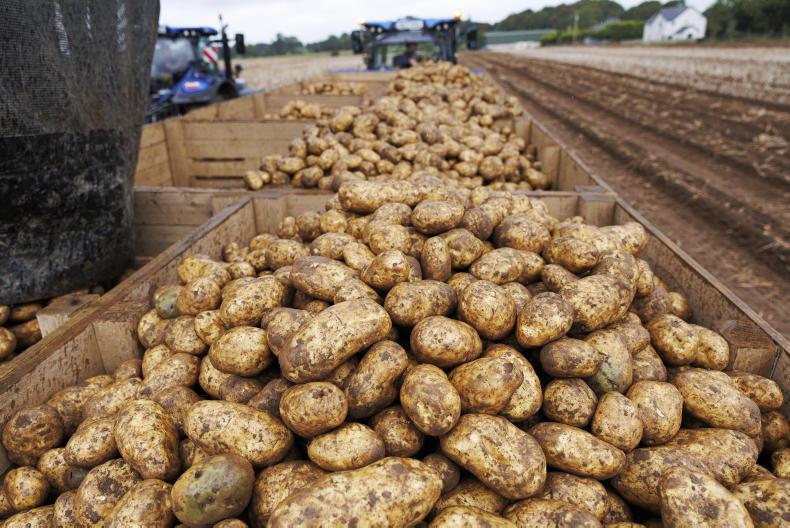
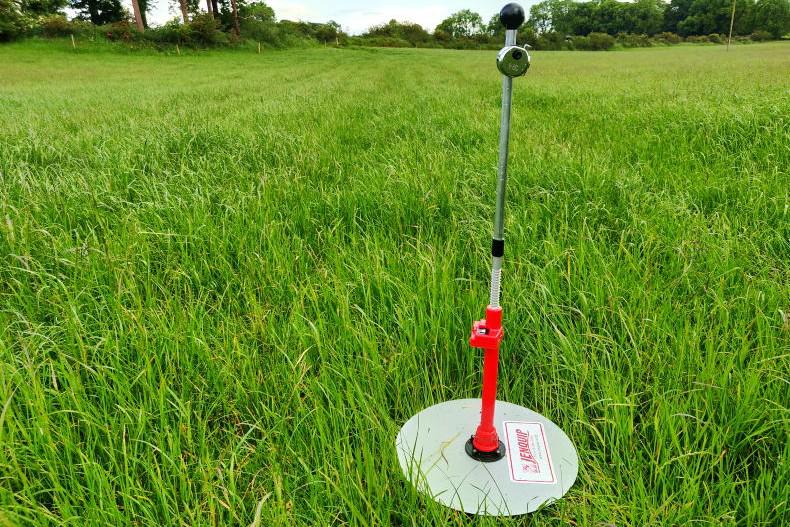
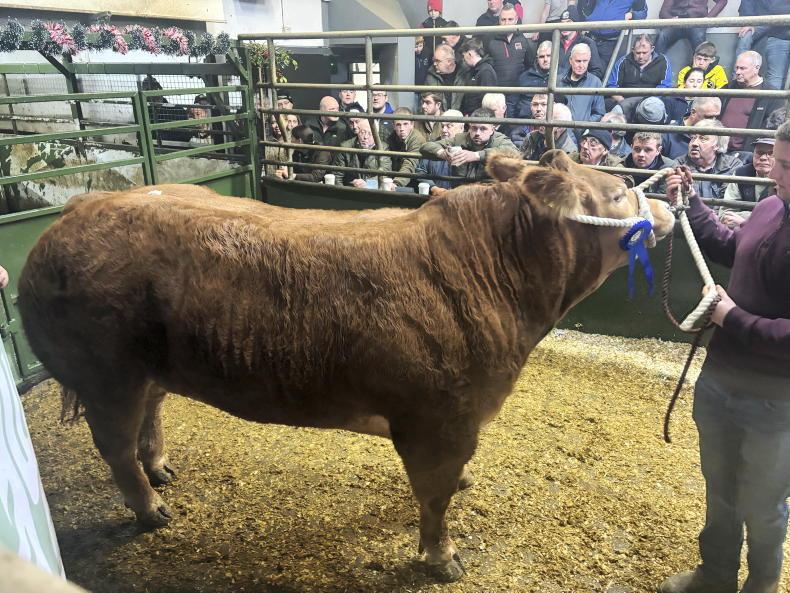
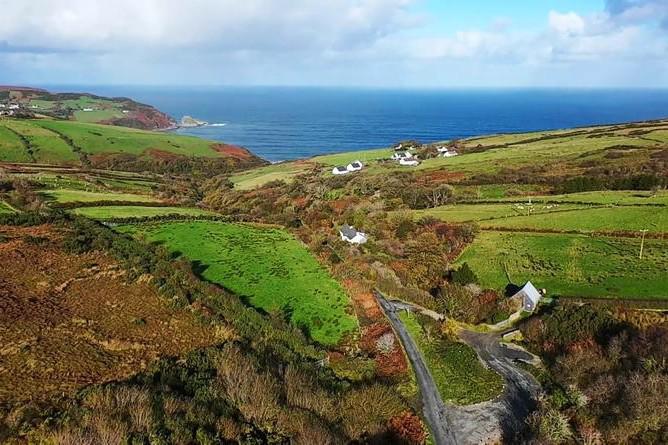
SHARING OPTIONS